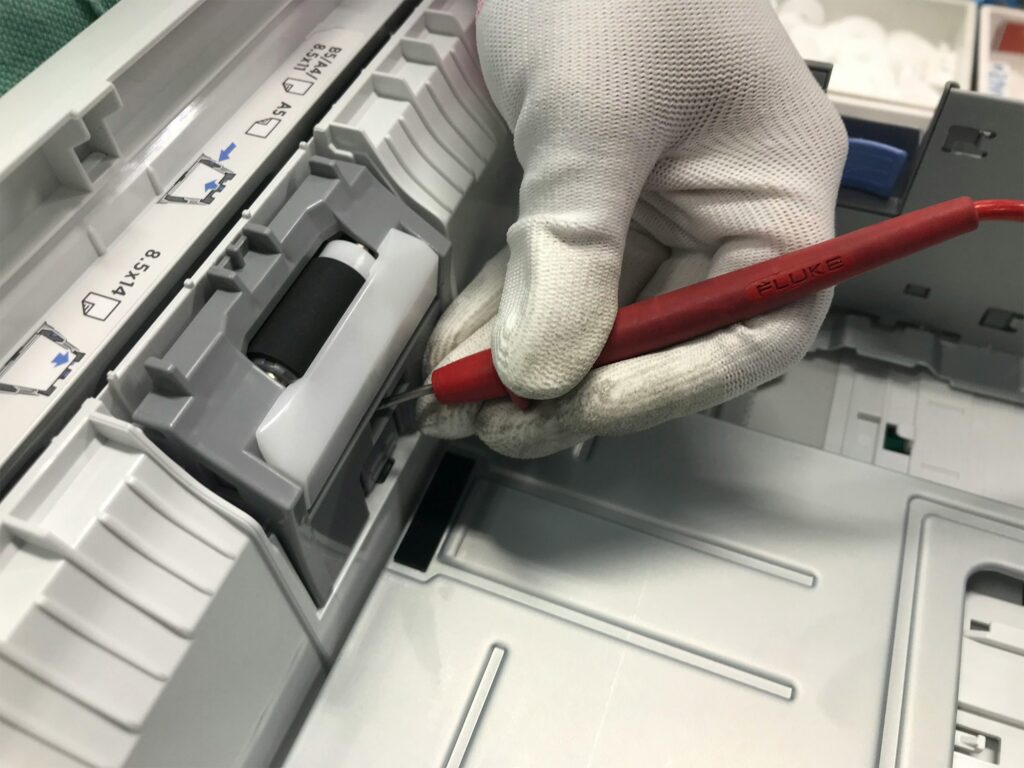
In today’s hybrid work world, a wireless printer is essential. Whether you’re printing from a laptop, tablet, or smartphone, Wifi connectivity keeps your workspace flexible and cable-free. But when your printer refuses to connect, or keeps dropping the connection, it can quickly become a productivity killer.
Here’s a step-by-step guide on how to connect your printer to Wifi and the most common reasons it disconnects.
How to Connect Your Printer to Wi-Fi
1. Check Network Requirements
Before starting, make sure:
- Your Wifi network is active and has a strong signal.
- The printer and your computer or phone are on the same network (2.4GHz or 5GHz, depending on the model).
- You have the correct Wifi password.
2. Use the Printer’s Control Panel or App
Most modern Ricoh and Canon printers make it simple:
- On the printer’s display screen, go to Settings → Network → Wifi Setup Wizard.
- Select your wireless network from the list.
- Enter your Wifi password using the on-screen keypad.
- Wait for a confirmation message that the printer is connected.
Tip: Many printers can also be connected via mobile apps such as Ricoh Smart Device Connector or Canon PRINT Business, which can automatically detect and configure the printer on your network.
3. Add the Printer to Your Device
Once connected to Wifi:
- On Windows, go to Settings → Bluetooth & Devices → Printers & Scanners → Add Device.
- On Mac, open System Settings → Printers & Scanners → + (Add).
Your computer should detect the printer automatically.
Why Your Printer Keeps Disconnecting
A printer that frequently disconnects from Wifi is frustrating, but it’s also a common problem. Here are the leading causes and fixes:
1. Weak or Unstable Wi-Fi Signal
If your printer is far from the router, the signal may drop. Try moving the printer closer or using a Wifi extender.
2. Power-Saving or Sleep Modes
Some printers disconnect from Wifi when entering sleep mode. Check your printer’s power settings and disable “Deep Sleep” if available.
3. Router or Network Changes
If you’ve replaced your router, changed your network name (SSID), or updated security settings, you’ll need to reconnect the printer using the new details.
4. IP Address Conflicts
When multiple devices share the same IP address, the printer can lose connection. Assigning a static IP address to your printer often solves this.
5. Firmware or Driver Issues
Outdated printer firmware or computer drivers can interrupt communication. Visit Ricoh or Canon’s official support pages to download the latest updates.
6. Too Many Devices on the Network
If your home or office network is overloaded, the printer may struggle to stay connected. Restart the router or limit active devices.
Troubleshooting Printer Wifi Problems
If your printer still won’t connect, or keeps dropping offline, try these steps before calling for service:
1. Restart Everything
Power off the printer, router, and computer. Wait 30 seconds, then power them back on in this order:
- Router
- Printer
- Computer or mobile device
This helps refresh IP assignments and clear temporary connection errors.
2. Re-Enter Wifi Credentials
If you’ve recently changed your Wifi password or SSID, delete the existing network profile on the printer and reconnect it from scratch.
3. Assign a Static IP
Log into your router settings and assign your printer a static IP address to prevent disconnections caused by DHCP reassignments.
4. Update Firmware and Drivers
Visit your printer’s manufacturer website (e.g., Ricoh Support or Canon Support) and install the latest firmware and drivers for your exact model.
5. Use the WPS Button (if available)
For a quick setup, press the WPS button on your router, then press the Wifi or WPS button on your printer. The devices should connect automatically within 2 minutes.
6. Check for Firewall or Security Blocks
Overly strict firewall settings can sometimes block printer traffic. Temporarily disable your firewall or antivirus, reconnect the printer, then re-enable protection.
7. Reset Network Settings
If all else fails, restore your printer’s Network Settings to factory defaults and reconnect it manually. This often clears persistent connection errors.
Pro Tip: Use a Managed Print Service
If Wifi issues are slowing your office down, consider Managed Print Services (MPS). An MPS provider like Emerald Document Imaging monitors your devices, manages updates, and ensures every printer stays online, so your team can focus on work, not tech troubleshooting.
Connecting your printer to Wifi should be quick and seamless, but when it’s not, a few adjustments can make all the difference.
By ensuring your printer has a strong signal, up-to-date firmware, and consistent network settings, you’ll keep printing reliably from anywhere in your office or home workspace.
Need Help Setting Up or Servicing Your Printer?
Emerald Document Imaging provides expert printer installation, setup, and support across Long Island, NYC, and the surrounding metro area.
Contact us today for local service or to learn about our wireless printer options.



